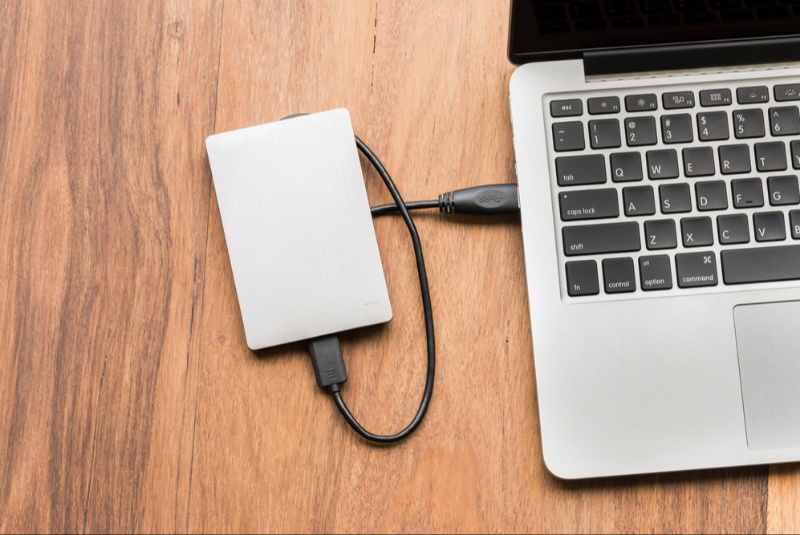Choosing an external hard drive in today’s digital world is about more than just additional storage. It’s about ensuring reliable access, speed, and security for your valuable data, whether it’s personal photos, important documents, or professional media projects.
1. Assessing Your Storage Needs: Determining the Right Capacity
Understanding Data Requirements
The first step in selecting an external hard drive is to assess your storage needs based on the types of files you’ll be saving. Basic documents, such as Word files or spreadsheets, generally don’t require much space. However, large photo libraries, music collections, and especially HD or 4K video files demand significantly more capacity.
Choosing the Right Capacity
External hard drives come in a wide range of capacities, from 500GB up to 8TB or more. For general use, such as document storage and occasional media, a 1TB drive may suffice. However, for photographers, designers, or video editors who handle high-resolution files, a higher capacity—like 2TB, 4TB, or even 8TB—ensures enough space for growing collections. Factor in some extra space for future needs; underestimating capacity might lead to a second purchase sooner than expected.
2. Drive Speed: HDD vs. SSD - Performance and Cost
HDD vs. SSD: Which to Choose?
External hard drives are generally available in two types: Hard Disk Drives (HDDs) and Solid State Drives (SSDs). HDDs are mechanical and generally less expensive, offering higher storage at lower costs. SSDs, on the other hand, have no moving parts and are much faster, which can be crucial if you work with large files or need quick access.
Assessing Performance Needs
Consider your performance needs when choosing between an HDD and an SSD. If you work with large files or need quick access for tasks like video editing, an SSD is worth the investment due to its fast read/write speeds. For general storage where speed isn’t a primary concern, an HDD offers more storage at a lower price point, making it ideal for backups or archiving data.
3. Connectivity Options: USB, Thunderbolt, and More
USB as the Standard Choice
Most external hard drives connect via USB, with USB 3.0, 3.1, and now USB-C becoming the most common standards due to high compatibility and speed. USB 3.0 provides fast data transfer rates suitable for large files, while USB-C offers additional convenience with its reversible plug, making it the preferred option for newer devices.
Thunderbolt: Ideal for High-Speed Needs
For users with devices that support Thunderbolt, such as many Mac users, this connection offers extremely high-speed data transfer. Thunderbolt 3 and 4 provide faster speeds than USB 3.1 and can handle large data flows, ideal for professionals who need rapid access and the fastest data transfer rates. Be sure to confirm device compatibility, as not all devices support Thunderbolt.

4. Portability and Durability: Priorities for On-the-Go Users
Compact, Portable Design
If you plan to use the drive across multiple locations or devices, choose a compact, lightweight design that fits easily into your bag. Portable drives are generally more compact and designed for easy transport, making them convenient for mobile use, especially for students, freelancers, and business professionals.
Rugged Protection for Active Environments
If you’re an on-the-go user who travels frequently or works in challenging environments, ruggedized drives offer added protection. Features such as shock resistance, waterproofing, and dust-proofing ensure your data remains safe from the elements. This is particularly useful for outdoor photographers or field researchers who need reliability in all conditions.
5. Backup and Security Features: Safeguarding Your Data
Built-In Backup Solutions
Many external hard drives come with backup software that allows you to schedule regular backups, making data protection straightforward. Consider features like incremental backups, which only update new changes, and cloud integration, which adds a further layer of safety by saving files to the cloud.
Data Security: Encryption and Password Protection
For those handling sensitive data, encryption is essential. Some drives offer hardware-based encryption, which provides secure data protection directly on the device. Software-based encryption options and password protection are also common, adding an extra layer of security. These features are vital if you store personal, business, or confidential information.
6. Brand Reputation and Reliability: Choosing Trusted Names
Researching Brand Credibility
Opt for brands with a reputation for reliable storage solutions. Leading brands like Seagate, Western Digital, Samsung, and LaCie have years of experience in producing dependable drives. By choosing established brands, you reduce the risk of data loss and gain access to comprehensive support if needed.
Expert and Customer Reviews
Consult expert reviews on sites like TechRadar, CNET, or Wirecutter, as well as user reviews on retailer sites, to gain a balanced view of each model’s strengths and weaknesses. Real-life user experiences can highlight aspects of durability, customer support, and reliability that might not be apparent from the specs alone.
7. Software Compatibility and Cross-Platform Use
Format for Compatibility
Some external hard drives are formatted specifically for Windows or macOS, so check compatibility with your system. Many drives come pre-formatted in NTFS for Windows, while Mac users may need to reformat drives to work seamlessly. For cross-platform use, format in exFAT, which works with both operating systems.
Software Integration and Features
Certain drives come with proprietary software that enhances functionality, like Western Digital’s WD Backup or Seagate’s Toolkit. These can simplify setup and management, especially if you’re using the drive for backup purposes. Check for any software add-ons or features that could complement your usage, especially if you need file syncing or automated backups.
8. Warranty and Support: Ensuring Longevity
Check Warranty Duration
Most quality drives come with at least a one-year warranty, with some extending up to three or five years. This coverage is essential as it offers reassurance against manufacturing defects. Drives from reliable brands with longer warranty periods usually indicate a commitment to durability.
After-Sales Support
After-sales support can make a difference if you encounter any technical issues. Some brands offer robust support, including online troubleshooting, customer service, and comprehensive manuals. Consider a brand with a strong support network, especially if you are investing in a high-capacity or premium drive.
Choosing the Right External Hard Drive
Selecting the perfect external hard drive involves a thorough consideration of your needs, preferences, and future data requirements. Start by assessing the amount and type of data you’ll be storing, then decide between HDD and SSD based on performance needs and budget. Connectivity, portability, security features, and brand reputation are essential factors that contribute to the reliability and ease of use of your chosen drive. Lastly, compatibility, software integration, and warranty details ensure that your drive is suited to your unique needs and can be maintained over time.
Your external hard drive isn’t just a storage device—it’s a secure, reliable partner for your data. Take the time to evaluate these factors, and you’ll be well-equipped to make a choice that enhances your digital lifestyle, providing safe and easy access to your files, projects, and memories whenever you need them.




